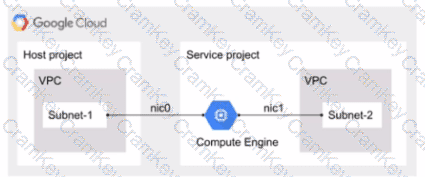| Exam Name: | Google Cloud Certified - Professional Cloud Network Engineer | ||
| Exam Code: | Professional-Cloud-Network-Engineer Dumps | ||
| Vendor: | Certification: | Google Cloud Platform | |
| Questions: | 220 Q&A's | Shared By: | alisa |
You are designing a hub-and-spoke network architecture for your company’s cloud-based environment. You need to make sure that all spokes are peered with the hub. The spokes must use the hub's virtual appliance for internet access.
The virtual appliance is configured in high-availability mode with two instances using an internal load balancer with IP address 10.0.0.5. What should you do?
You have the following Shared VPC design VPC Flow Logs is configured for Subnet-1 In the host VPC. You also want to monitor flow logs for Subnet-2. What should you do?

You need to enable Private Google Access for use by some subnets within your Virtual Private Cloud (VPC). Your security team set up the VPC to send all internet-bound traffic back to the on- premises data center for inspection before egressing to the internet, and is also implementing VPC Service Controls in the environment for API-level security control. You have already enabled the subnets for Private Google Access. What configuration changes should you make to enable Private Google Access while adhering to your security team’s requirements?
You need to ensure your personal SSH key works on every instance in your project. You want to accomplish this as efficiently as possible.
What should you do?